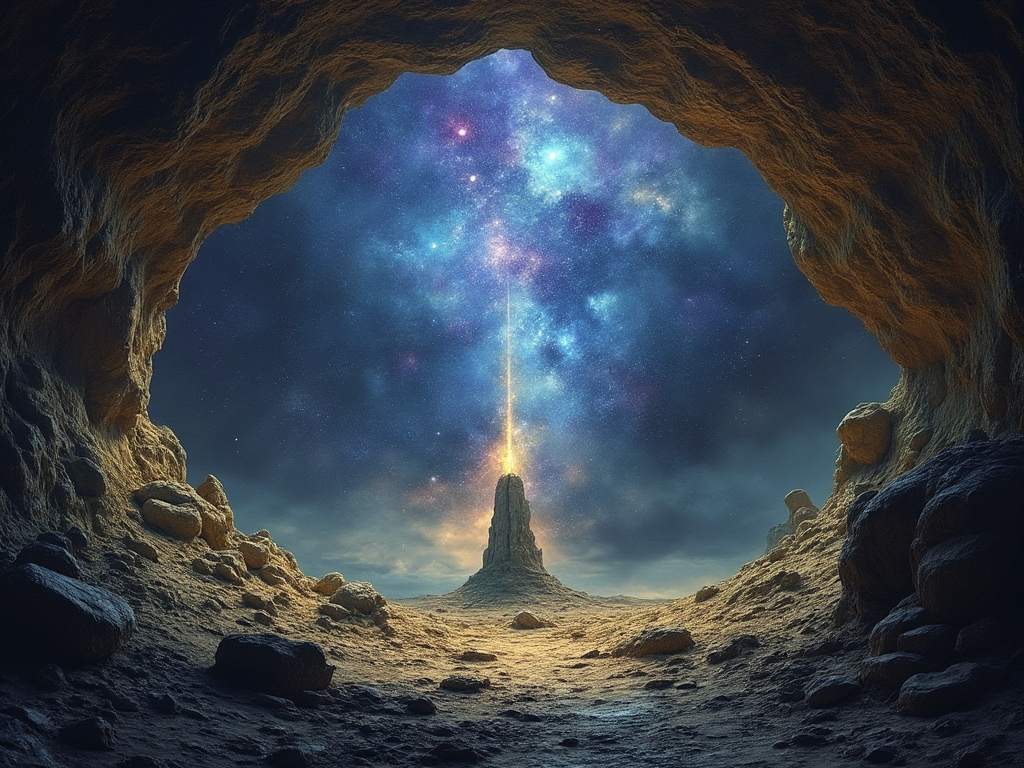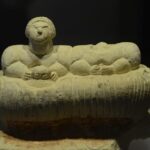| Malta Short Let: Cozy Stay in Gzira | |
|
Sliema Area Modern Designer Finished 2 Bedrooms + Games Room. First floor with Maltese Balcony Large back Terrace with swinging sofa Fully Airconditioned + Full Kitchen 3 TVs, including 65” with backlight. |
 |
|
Book Now: Google Travel | Direct (Cheapest) | Booking.com | Airbnb |
|
One of the more fascinating possibilities concerning the sudden demise of the temple-building civilization lies in the notion of knowledge suppression. As advanced as the temple builders may have been in their understanding of astronomy, geomancy, and ritualistic practices, it’s not unthinkable that this very knowledge might have led to their downfall. The hidden wisdom of the Maltese ancients may have been lost or intentionally concealed.
Could it be that the complexity of their rituals and their intimate knowledge of the natural world became too esoteric for the broader population to grasp? When societies develop in such a way that a select few hold the keys to spiritual and intellectual power, this can lead to an imbalance. If only a privileged priestly class could maintain and preserve the intricate cosmological systems that governed the society, the decline of that class—due to famine, disease, or political unrest—could have led to the rapid unraveling of the entire cultural fabric. The enigmatic temples of Malta hold secrets of lost knowledge and ancient power.
What if the temple builders’ complex knowledge of the stars, the seasons, and the earth’s energies made them vulnerable to social shifts or external invasions? It’s not hard to imagine a scenario where, rather than an ecological disaster, it was a cultural coup—an overthrow of the elite knowledge-keepers—that brought about the end of the temple-building era. Could there have been an internal revolt, a rejection of the very foundations of their spiritual and intellectual systems, leading to the abandonment of their sacred temples? The story of the forgotten temple builders of Malta unravels Europe’s ancient megalithic civilization.
Furthermore, one has to wonder if the knowledge was actively suppressed. Did a conquering group seek to erase the legacy of these ancient builders? The sudden abandonment of the temples, without any written record or significant cultural transmission to later inhabitants, raises questions about whether this knowledge was deliberately lost. Could the new population have had an interest in erasing the memory of the ancient builders—perhaps out of fear, jealousy, or religious opposition? Some researchers have explored possible connections between geological instability and the Maltese megalithic structures.
Unsolved Mysteries: The Sleeping Lady and Symbolic Death
The figurines of the Maltese temples, particularly the Sleeping Lady from the Ħal Saflieni Hypogeum, continue to spark debate. Representing a woman reclining in a peaceful, almost meditative posture, this artifact has often been interpreted as a symbol of eternal rest, possibly associated with death or the afterlife. However, its serene expression and relaxed pose raise an important question: Could this figurine symbolize something beyond death? The Ħal Saflieni Hypogeum is Malta’s underground wonder, waiting to be discovered.
In modern interpretations, we often view death as an end—final and inescapable. But for the temple builders, could death have been seen as a transition, a gateway to another state of existence, rather than a final destination? The underground burial chambers in Malta, intricately carved and imbued with religious significance, suggest that the dead played an ongoing role in the spiritual life of the community. Was the Sleeping Lady a symbol not just of death, but of dreaming or astral travel? Perhaps she was meant to evoke a state of deep communion with the divine, achieved through meditation or trance.
If the Sleeping Lady was indeed a representation of the human soul traveling between worlds, we might begin to reinterpret the purpose of the temples themselves. Were they designed not only as places of worship or astronomical observatories but as sacred spaces for these “soul journeys”—places where the living could venture into other dimensions through ritual and meditation? Malta’s Neolithic pottery connects an ancient civilization, unveiling more secrets.
It is also worth considering that the Sleeping Lady may have represented a priestess engaged in a form of dream incubation, as some have speculated. Could the priests and priestesses of the Maltese temples have practiced a form of shamanism, traveling in their dreams to gain divine insights, much like the dream-oracles of later Mediterranean civilizations?
The Temples and the Stars: Were They Stargates?
It’s impossible to ignore the astronomical alignments of the Maltese temples. Many scholars have noted the precise way in which the temple entrances are aligned with the rising and setting sun during solstices and equinoxes. But was this alignment merely symbolic, or did the temple builders have a practical reason for mapping their monuments onto the heavens? The dolmens, temples, and cosmic alignments of Malta offer a new perspective on this ancient civilization.
Some alternative theorists have speculated that the temples could have been designed as “stargates”—portals through which spiritual or even physical travel between realms was made possible. This idea, while speculative, draws on the fact that many ancient cultures viewed specific locations on Earth as places where the veil between the physical and spiritual worlds was thin.
Could the Maltese temples have been built at places where natural geomagnetic forces were especially strong, and could these forces have been used to facilitate contact with other dimensions? The idea may seem fantastical, but it is worth noting that many megalithic structures around the world are built on ley lines, the supposed energy paths that crisscross the globe. The precise knowledge of astronomy and geomancy required to align these temples with such cosmic precision suggests a deep understanding of the relationship between Earth and sky—knowledge that may have extended beyond mere agricultural purposes.
Even more intriguing is the idea that the temples were not just aligned to the stars but were actively involved in rituals that sought to harness the power of celestial bodies. Was the annual alignment of the sun with temple doorways a time when the builders conducted ceremonies to commune with celestial beings, gain cosmic wisdom, or influence the forces of nature? Malta’s Mnajdra and Ħaġar Qim temples offer a journey through time for those seeking to discover these ancient wonders.
Temples of Life, Temples of Death: Were the Builders Obsessed with Both?
The dual focus of the Maltese temples on both life and death is unmistakable. On one hand, we see altars, carved figurines, and depictions of fertility symbols, suggesting a vibrant cult of life and creation. On the other hand, the presence of burial chambers, the Hypogeum’s labyrinthine depths, and the skeletal remains of thousands of individuals indicate that death played a significant role in their religious consciousness. The Ġgantija Temples in Gozo invite visitors to step into the ancient world and unravel their secrets.
This raises an important question: Were the temple builders obsessed with the cyclical nature of life and death to the point where their rituals blurred the line between the two?
The architectural design of the temples suggests that they were conceived with a deep awareness of the interconnectedness of all things. The spiral carvings, often thought to represent the eternal cycles of life and death, might have symbolized the transition of souls from one realm to another. The physical journey through the temple’s chambers, from the bright open forecourt into the darkened, enclosed apses, could have mirrored the soul’s journey from life into death—and possibly back again.
Given this focus on death, it’s worth considering whether the temple builders practiced rituals of resurrection or rebirth. Could the bodies of the deceased have been viewed not as remnants of a past life, but as entities still capable of interacting with the living world? There is evidence that the bones in the Hypogeum were periodically rearranged, possibly as part of rituals that involved continued contact with the dead. Could the builders have believed in some form of reincarnation or resurrection, using their temples as places where this process could be facilitated?
Did the Priests Hold the Power of Life and Death?
If the temples were sites where life, death, and rebirth were central to the community’s rituals, it’s reasonable to assume that those who controlled these sacred spaces wielded immense power. The priests—or priestesses—of the temple-building society may have been seen as intermediaries between the mortal world and the divine, capable of influencing the fates of their followers.
But what kind of power did they truly hold? Were they merely spiritual guides, or did they have more practical control over the lives of the people? It is possible that these priests were also the keepers of agricultural knowledge, using their understanding of the stars and seasons to determine the best times for planting and harvesting. In a fragile environment like Malta, where resources were limited, control over the food supply would have been paramount.
Moreover, the role of priests in managing the temples may have extended into more esoteric realms. Could they have performed rituals that sought to ensure not just physical abundance but also spiritual protection? In times of crisis—such as drought, disease, or social unrest—did the priests perform elaborate ceremonies to appease the gods or ancestors, invoking their help in restoring balance to the community?
If so, we must ask: What happened when these rituals failed? Did the temple builders eventually lose faith in their priests, contributing to the collapse of their society? Or did the priests themselves become corrupted, turning their sacred knowledge into tools of control and manipulation?
The Final Mystery: Why Were the Temples Abandoned?
In the end, one of the greatest mysteries remains: Why did the temple builders abandon their most sacred sites? Around 2500 BCE, temple construction ceased, and the population either left or vanished. Was this due to environmental factors, such as soil exhaustion or a change in climate that made life on the islands unsustainable? Or was there a deeper, more spiritual reason?
Could it be that the people lost faith in the rituals that had sustained them for so long? Did a new ideology or external cultural influence lead them to reject their ancient beliefs? Or perhaps they feared that their gods, once so benevolent, had turned against them.
The Maltese temples stand as monuments to a lost civilization, their stones whispering secrets that we may never fully understand. Yet, as we continue to study these remarkable structures, new insights will undoubtedly emerge. The questions posed by these ancient monuments invite us to expand our imaginations, challenging us to think beyond the known and into the realm of possibility.
And speaking of exploring Malta’s rich history, why not experience it firsthand? While the ancients might have relied on communal shelters or the hospitality of fellow travelers during their journeys, modern visitors have the luxury of comfortable accommodations. If you’re planning to delve into Malta’s mysteries, consider staying in Sliema or Gzira, where you can enjoy both convenience and comfort.
Here are our two recommended short stays in Sliema:
Sliema: A one-bedroom apartment with a Maltese balcony, comfortable sofa, three TVs, air conditioning, and internet access. Book your Sliema rental apartment today
Gzira: A designer-finished two-bedroom apartment in a great location. Features include a 65″ TV, Maltese balcony, kitchen, back terrace, internal yard with a nice mural, comfortable sofa, and internet access. Book your Gzira rental apartment today
After all, exploring ancient sites is even more rewarding when you have a cozy home base to return to—something the temple builders might have appreciated if they’d had the option.
Disclaimer: The content here is based on some theories, interpretations, and speculation. Much of it involves educated guesses, thoughts, and some imagination about Malta’s Neolithic temples and culture. These are not proven facts and may change with new discoveries. These ideas are far from definitive or conclusive.








